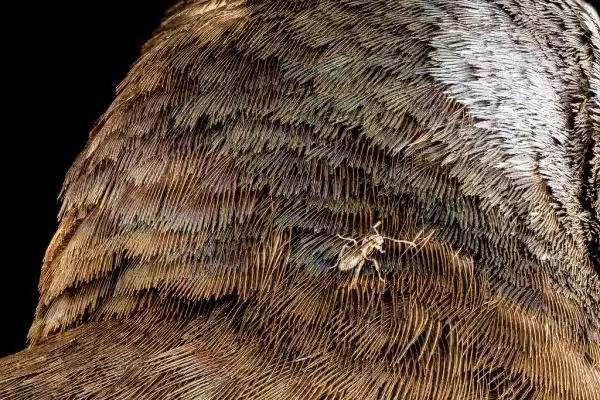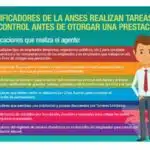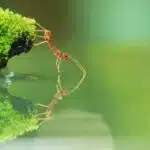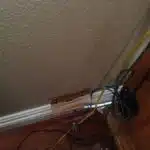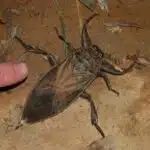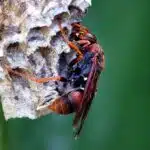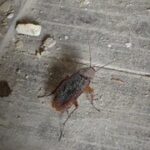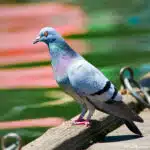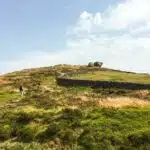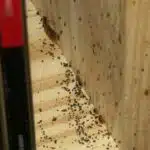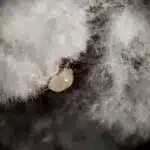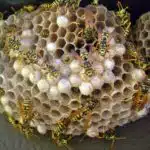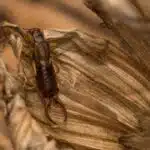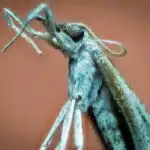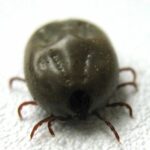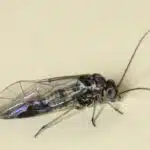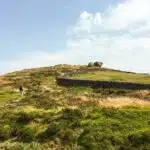Ghost ants are a common household pest that can be difficult to get rid of once they have established a colony in your home. These tiny ants get their name from their translucent appearance, which makes them difficult to spot until they are crawling across your kitchen counters or pantry shelves. Despite their small size, ghost ants can be a persistent problem for homeowners, as they reproduce quickly and can spread throughout the house if left unchecked.
If you’re dealing with a ghost ant infestation, don’t despair – there are several effective methods for getting rid of these pesky insects and preventing them from coming back. As a pest control specialist, I’ve seen my fair share of ghost ant colonies and have developed strategies for eliminating them safely and effectively. In this article, I’ll share some tips and tricks for identifying ghost ants, locating their nests, and using natural or chemical methods to eradicate them from your home. Whether you prefer DIY solutions or calling in a professional exterminator, there are steps you can take to keep your home ant-free and ensure the health and safety of your family.
Identifying Ghost Ants
Ghost ants are a common household pest that can be difficult to identify due to their small size and translucent appearance. These ants are typically no larger than 1/16th of an inch and range in color from pale yellow to brown. Their name comes from their ghost-like appearance, as they seem to disappear when viewed from certain angles.
Identifying ghost ant species can be challenging because they often look very similar to other ant species, such as pharaoh ants or thief ants. One way to distinguish them is by their behavior. Ghost ants tend to move erratically and quickly, making sudden changes in direction without any apparent reason. They also tend to prefer sweet foods, so if you notice ants clustering around your sugar bowl or honey jar, there’s a good chance they’re ghost ants.
If you suspect you have ghost ants in your home, it’s important to act quickly before the infestation gets out of hand. These pests can reproduce rapidly and form large colonies in a short amount of time, so early identification is key. By understanding what sets ghost ants apart from other ant species and keeping an eye out for their specific behaviors, you can take steps to eliminate them from your home and prevent future infestations.
Understanding Ghost Ant Behavior
Ghost ants are known for their elusive and erratic behavior, making them difficult to control. Understanding their behavior can help in developing effective pest management strategies. Ghost ants are social insects that communicate with each other through chemical signals called pheromones. These signals guide the ants’ movements and behaviors, such as foraging, nesting, and reproduction.
Ant behavior modification is a technique used to disrupt the pheromone communication system of ghost ants. This method involves the use of repellents or baits that contain chemicals that mimic or alter the natural pheromones produced by the ants. By introducing these synthetic pheromones into the ant colony, it can cause confusion among the ants, which can lead to disorientation and disruption of their activities.
Ant communication methods play an essential role in locating and eliminating ghost ant infestations. Ghost ant nests are typically found in moist areas such as wall voids, under appliances, or in potted plants. Ant bait stations strategically placed near potential nesting sites can attract foraging worker ants who will carry the bait back to their nest, effectively eliminating the entire colony. In addition, monitoring ant activity through regular inspections can help identify potential problem areas before they become severe infestations.
Transition: A crucial step in controlling ghost ant infestations is locating their nests. The next section will discuss effective techniques for identifying ghost ant nesting sites and how to eliminate them.
Locating Ghost Ant Nests
- Ghost ants are small and difficult to locate, making it important to identify nest locations in order to effectively target ghost ants.
- Entry points of ghost ant nests can be identified by looking for small tunnels in the ground, which are often the result of ant activity.
- Common areas for ghost ant nests include walls, floors, cracks, and crevices, as well as near water sources.
- Pest control experts can use a variety of methods to investigate common areas for the presence of ghost ants, such as using insecticides or baits.
- Exclusion techniques, such as sealing entry points, can also be employed to prevent further infestations.
- Finally, baiting or trapping ants can be used to effectively control the population of ghost ants in a particular area.
Identifying Nest Locations
Identifying Nest Locations is crucial when dealing with a Ghost Ant infestation. Many homeowners have common misconceptions about the location of ant nests, assuming that they are only found outdoors. However, these ants have been known to nest both indoors and outdoors, making it difficult to locate their nests accurately.
One of the signs of a severe infestation is the number of ants present in a particular area. Ghost Ants are tiny and can easily go unnoticed until there is an extreme buildup. To identify nest locations, homeowners must look for trails leading to food sources or water sources. These trails are usually lined with ants moving back and forth between the nest and food source.
Another sign of a severe infestation is the presence of multiple queens in one colony. Ghost Ant colonies may contain more than one queen, which makes it challenging to eliminate them entirely. Identifying Nest Locations will help pest control specialists determine the best course of action for eliminating Ghost Ants from your property effectively. It’s essential to address the problem promptly before it gets out of hand.
In conclusion, identifying Ghost Ant Nest Locations is critical when trying to get rid of these pests from your home or business premises. Signs like trails leading to food sources or water sources and multiple queens in one colony are pointers towards a severe infestation that needs immediate attention by pest control experts/specialists. By understanding these signs and getting professional help quickly, you can eliminate Ghost Ants from your property completely without risking further damage or inconvenience caused by these pests’ presence.
Finding Entry Points
Identifying Ghost Ant Nest Locations is crucial when trying to eliminate these pests from your property. However, finding these nests can be challenging, especially since Ghost Ants are known to nest both indoors and outdoors. One way to locate these nests is by identifying common entry points used by the ants. Common entry points include gaps in windows and doors, cracks in walls, and holes in foundations.
Once you have identified the common entry points used by the Ghost Ants, the next step is to seal them off. Sealing off entry points will help prevent future infestations by blocking the ants’ access to your home or business premises. Some ways to seal off entry points include using weatherstripping on doors and windows, caulking cracks in walls and foundations, and filling holes with mesh wire or foam insulation.
In addition to sealing off entry points, you may also want to consider using ant repellent barriers as an additional line of defense against Ghost Ants. These barriers are applied around the perimeter of your home or business premises and create a barrier that repels ants away from your property. By combining efforts such as sealing off entry points and using ant repellent barriers, you can effectively control Ghost Ant infestations without risking further damage or inconvenience caused by these pests’ presence.
Investigating Common Areas
After identifying common entry points used by Ghost Ants and sealing them off, another way to locate their nests is by investigating common areas. These ants are known for nesting in hidden and hard-to-reach places, making it challenging to locate their colonies. However, there are common signs that you can look out for to determine the location of their nests.
One of the most common signs of a Ghost Ant nest is a trail of ants leading to and from a particular area. These trails usually indicate where the ants are coming from or going to, which can help you trace the location of their nest. Another sign is the presence of ant debris, such as discarded wings and exoskeletons. If you notice these signs in a specific area, there is a high chance that it could be the location of a Ghost Ant nest.
When inspecting common areas for Ghost Ant nests, it’s essential to use proper inspection techniques. Start by examining areas where food or moisture is present, such as kitchens and bathrooms. Pay close attention to cracks in walls and floors, electrical outlets, and plumbing fixtures since these areas provide an ideal environment for Ghost Ants to build their nests. By using thorough inspection techniques and looking out for common signs, you can effectively locate Ghost Ant nests and take appropriate measures to eliminate them from your property.
Natural Ant Control Methods
After locating ghost ant nests, the next step is to eliminate them. While there are chemical insecticides available in the market, using natural ant control methods can be a safer and more eco-friendly option. One of these methods involves the use of herbal remedies and ant repellent plants.
Herbal remedies such as peppermint oil, cinnamon, and cloves are known for their strong scent that repels ants. You can mix a few drops of these oils with water and spray it around your home’s entry points or areas where you often see ants. Another option is to place cotton balls soaked in these oils near ant trails or nest entrances. Ant repellent plants like lavender, sage, and eucalyptus can also be planted near your home to keep ants at bay.
Apart from using natural remedies, you can also make DIY ant baits. These baits typically involve mixing borax or boric acid with sugar water. The ants will be attracted to the sugar while the borax/boric acid will kill them slowly over time. However, it’s important to place these baits out of reach of children and pets since borax/boric acid can be toxic if ingested.
Moving forward, incorporating natural pest control methods into your routine can ensure a safe environment for you and your family while keeping pesky insects like ghost ants at bay. In the next section, we will discuss how to make DIY ant baits that are effective and easy to use.
Diy Ant Baits
If you’re looking for ways to get rid of ghost ants in your home, DIY ant baits can be an effective solution. Ant baits work by using a sweet or protein-based substance that attracts the ants, which then carry the bait back to their colony. Once the bait is consumed by other ants in the colony, it can help eliminate the entire population.
One easy DIY ant bait recipe involves mixing equal parts of sugar and Borax with water to create a paste. Place small amounts of the paste in areas where you’ve seen ghost ants, such as on countertops or along baseboards. It’s important to keep these baits out of reach of children and pets, as Borax can be toxic if ingested in large amounts.
Another option is to use natural ant deterrents, such as essential oils like peppermint or cinnamon. Simply mix a few drops of your chosen oil with water and spray it around areas where ghost ants are present. Other natural options include vinegar or lemon juice solutions, which can be sprayed directly onto ant trails and entry points. By using these DIY methods, you can avoid harsh chemicals and still effectively control ghost ant infestations.
Transition: While DIY ant baits and natural deterrents can be effective at controlling ghost ants, sometimes a more powerful solution is necessary. In the next section, we’ll discuss how using borax can help eliminate ghost ants for good.
Using Borax To Eliminate Ghost Ants
Although DIY ant baits can be effective, they may not always work for controlling ghost ants. This is because ghost ants prefer sweet and sugary substances, which may not be present in the bait mixture. Therefore, it is important to consider other pest control methods, such as using Borax.
Borax is a common household item that can effectively eliminate ghost ants. It works by damaging their exoskeletons and dehydrating them. However, it is important to use Borax safely and correctly to avoid harming yourself or others. Always wear gloves when handling Borax and keep it out of reach of children and pets.
If you are concerned about using Borax, there are alternative methods for controlling ghost ants. For example, essential oils such as peppermint, lemon, and tea tree oil have been found to repel ants. Simply mix a few drops of the oil with water and spray it on areas where you have seen ghost ants. However, keep in mind that these oils may only provide temporary relief and may not completely eliminate the ant infestation.
In summary, while DIY ant baits can be effective for some species of ants, they may not work for controlling ghost ants. Using Borax is a safe and effective method for eliminating ghost ants; however, make sure to follow safety precautions when using it. If you prefer to use natural methods for pest control, essential oils can provide temporary relief from ghost ants but may not completely eliminate the problem. In the next section, we will discuss how essential oils can be used for ant control in more detail.
Essential Oils For Ant Control
Essential oils have become a popular natural alternative for ant control. Essential oil blends are known to be effective in repelling ants without causing harm to the environment or pets. These oils have strong scents that are intolerable to ants, making them an excellent DIY ant repellent.
Peppermint oil is one of the most commonly used essential oils for ant control. Its strong scent confuses and overwhelms the ants, making it difficult for them to identify food sources and trails. Another effective essential oil is tea tree oil, which contains terpenes that repel ants. Cinnamon oil is also known to be an excellent ant repellent due to its strong scent and antimicrobial properties.
To create an effective DIY ant repellent using essential oils, mix 10-15 drops of your chosen essential oil with a cup of water in a spray bottle. Shake well before use and spray directly on areas where ants are present. It is important to note that essential oils should not be used as a substitute for professional pest control services, especially if you have a severe infestation.
Preventing future ant infestations is crucial in maintaining pest-free living spaces. The use of essential oils may help deter future ant infestations, but it is still necessary to practice good sanitation habits such as keeping food sealed and removing trash regularly. Regularly inspecting your home’s exterior for entry points and sealing any cracks or gaps can also prevent ants from entering your home.
Preventing Future Ant Infestations
As we have discussed, getting rid of ghost ants can be a daunting task. However, it is equally important to prevent future ant infestations. One effective way to achieve this is by incorporating ant repelling plants into your property’s landscape. These plants emit strong fragrances that deter ants from entering your home. Examples of such plants include lavender, peppermint, and eucalyptus.
Another preventive measure that you can take is to invest in ant-resistant storage solutions. By using containers made of materials such as glass or stainless steel, you eliminate the risk of ants infiltrating your food supply. Additionally, make sure to store sweet foods in airtight containers and clean up spills immediately.
Incorporating these preventive measures will go a long way in ensuring that you do not experience another ant infestation. Remember to keep your home clean and tidy by regularly vacuuming and wiping down surfaces. A clean environment discourages the growth of an ant colony and makes it easier for you to spot signs of an infestation early on before it gets out of hand.
Keeping Your Home Clean And Tidy
To prevent future ant infestations, it’s important to keep your home clean and organized. Ants are attracted to food and water sources, so be sure to regularly clean up spills and crumbs. Store food in airtight containers and avoid leaving pet food out for extended periods of time. Additionally, eliminate any standing water or moisture sources in your home.
Organizational tips can also help prevent ant infestations. Cluttered areas provide hiding spots for ants, so try to keep your home as tidy as possible. Declutter regularly and avoid leaving piles of papers or clothing around your home. Use storage solutions like bins or shelves to keep items off the floor.
Cleaning supplies can assist with preventing ant infestations as well. Regularly clean surfaces with vinegar or another natural cleaning solution that contains citrus or peppermint essential oils, which are known to repel ants. Avoid using harsh chemicals that could harm both humans and pets, as well as attract ants due to their strong odor.
Now that you’ve taken steps towards preventing future ant infestations by keeping your home clean and organized, it’s time to focus on sealing cracks and holes in your home. These entry points provide easy access for ants looking for food and water sources. So grab some caulk or weather stripping, and let’s get started!
Sealing Cracks And Holes In Your Home
As a pest control specialist, I recommend sealing cracks and holes in your home as part of your strategy in getting rid of ghost ants. Using caulk and weatherstripping are effective ways to seal gaps around windows, doors, baseboards, and other entry points where these tiny insects can enter your home. Not only does this method prevent ghost ants from entering your premises, but it also prevents other pests from invading your space.
Pest exclusion techniques are crucial in keeping pests out of your home. Gap sealing is one way to keep them at bay. By closing off any openings or crevices that provide easy access for ghost ants, you can create a barrier that will prevent them from coming inside. This method is not only cost-effective but also environmentally friendly since it reduces the need for harsh chemicals.
To ensure that you’ve sealed all potential entry points for ghost ants, it’s advisable to conduct regular inspections around the perimeter of your home. Check for any gaps or cracks that may have developed over time and reseal them as necessary. Remember that prevention is always better than cure, so take proactive steps to safeguard your home against pests.
As we move on to our next section on eliminating sources of moisture, it’s essential to note that sealing cracks and holes alone may not completely eliminate ghost ant infestations; hence it should be done alongside other strategies such as identifying and eliminating their food sources. With this in mind, let’s take a look at how eliminating sources of moisture can help get rid of these pesky insects once and for all.
Eliminating Sources Of Moisture
According to recent studies, moisture is one of the primary attractants for ghost ants. In fact, these tiny pests can detect even the slightest increase in humidity levels and will flock to areas with high moisture content. Therefore, eliminating sources of moisture is crucial when it comes to getting rid of ghost ants.
One effective way to reduce moisture levels in your home is by using dehumidifiers. By pulling excess moisture out of the air, these devices can create an environment that is less hospitable to ghost ants. Additionally, proper ventilation can also help reduce moisture levels by allowing air to circulate freely throughout your home.
To further eliminate sources of moisture, consider implementing the following measures:
- Fix any leaks or drips in plumbing fixtures
- Use exhaust fans in bathrooms and kitchens
- Avoid overwatering indoor plants
- Regularly clean and dry areas prone to dampness such as under sinks and around windows
By taking these steps, you can significantly reduce the amount of moisture present in your home and make it less attractive to ghost ants.
Reducing moisture levels is just one step towards eliminating ghost ant infestations. If you have already tried these methods but are still struggling with a pest problem, it may be time to call in a professional exterminator who has specialized knowledge and tools for effectively dealing with these tiny pests.
Calling In A Professional Exterminator
Eliminating sources of moisture is a crucial step in getting rid of ghost ants. However, if the infestation persists despite your efforts to remove the moisture, it may be time to call in a professional exterminator. Hiring an exterminator can be costly, but it may be necessary for severe infestations or for those who have tried everything else without success.
The cost of professional extermination services vary depending on several factors such as the severity of the infestation and the type of treatment needed. In general, the average cost for ant control services ranges from $150 to $300. However, this can go up or down depending on various factors such as location, size of the property, and type of treatment used.
While hiring an exterminator can be expensive, it is often worth it in terms of peace of mind and long-term effectiveness. Professionals have access to stronger chemicals that are not available to consumers and are trained in their proper application. They also know where to look for ant nests and how to eliminate them effectively. If you are considering hiring an exterminator for ghost ants or any other pest problem, make sure to do your research and choose a reputable company with experience in dealing with your specific issue.
Understanding chemical ant control methods is essential before proceeding with professional extermination services. In the next section, we will discuss some common chemical treatments used by professionals and what you need to know before implementing them in your home or property.
Understanding Chemical Ant Control Methods
Chemical Ant Control: Pros and Cons
When it comes to getting rid of ghost ants, chemical ant control is a popular method that homeowners often turn to. It involves using pesticides and baits to kill the ants and prevent them from returning. The main benefit of this method is its effectiveness in eliminating the ants quickly and thoroughly. However, there are also some cons associated with chemical ant control that homeowners should be aware of.
One major drawback of chemical ant control is its potential harm to humans and pets. Pesticides can be toxic if ingested or inhaled, so it’s important to take precautions when applying them. Additionally, if not used properly, chemicals can also contaminate food and water sources, posing a health risk to both humans and animals. Another con of chemical ant control is its impact on the environment. Chemicals can contribute to air pollution and contaminate soil and water sources, which can harm wildlife and disrupt ecosystems.
Choosing the Right Ant Control Method
Before choosing a method for controlling ghost ants, it’s important to weigh the pros and cons of each option carefully. While chemical ant control may be effective in eliminating the ants quickly, it also carries some risks that need to be considered. Alternatives such as natural remedies or preventative measures like sealing cracks and openings may offer a safer and more environmentally friendly approach. Ultimately, the best choice will depend on your specific situation and needs.
Transition: Now that we’ve discussed the pros and cons of chemical ant control, let’s move on to another important aspect: safety precautions for using these products effectively without causing harm or damage.
Safety Precautions For Chemical Ant Control
- When handling any chemical ant control product, it is important to wear protective gear such as gloves, a face mask, and protective eyewear.
- Prior to using any chemical ant control product, it is essential to read the product label in order to understand the potential risks and hazards associated with its use.
- When storing chemical ant control products, they should be kept in a secure location away from children, pets, and food preparation areas.
- It is important to ensure the chemical ant control product is stored in a cool, dry location, out of direct sunlight and away from any other combustible materials.
- Chemical ant control products should be securely closed and labelled to avoid any accidental spills or contact.
- When disposing of any chemical ant control products, always do so in accordance with the instructions on the product label to avoid any potential hazards.
Wear Protective Gear
The safety of individuals should always come first when applying chemicals to control ghost ants. As a pest control specialist, it is crucial to wear protective gear during the treatment process. Choosing the appropriate protective gear is necessary to prevent skin irritations and other health hazards. This includes wearing long-sleeved shirts, pants, gloves, and closed-toe shoes.
Proper use of protective gear is also essential in ensuring safety precautions are met during chemical ant control. When using pesticides, it is advisable to avoid touching any part of the body with unprotected hands or clothing. Protective gloves provide an extra layer of protection from exposure to harmful chemicals that could cause skin rashes or burns. Additionally, wearing goggles and respirators protects eyes and lungs from inhaling toxic fumes.
In conclusion, wearing protective gear is vital when dealing with ghost ants infestations using chemical treatments. The proper choice and use of protective gear help minimize exposure to harmful chemicals that can lead to adverse health effects. As a pest control specialist, you must prioritize the safety of your clients by adhering to safety precautions throughout the entire process of exterminating ghost ants from their homes or offices.
Read Product Labels
When it comes to chemical ant control, safety should always be the top priority. As a pest control specialist, one must take all necessary precautions to ensure not only their safety but also the safety of their clients and the environment. One essential aspect of this is reading product labels carefully before using any chemicals.
Product labels provide critical information on how to use a particular chemical safely and effectively. It is crucial to check for toxicity levels, potential hazards, and recommended protective gear before application. Ignoring these warnings could result in harmful exposure to chemicals that pose significant health risks.
Using protective gear is vital when handling pesticides or other chemicals used in ant control. However, wearing protective gear alone is not enough without knowing what chemicals are being used and how to handle them safely. This is why it is important to read product labels carefully before using any chemical treatment method. By doing so, one can reduce the risks associated with handling toxic substances while ensuring effective pest control services.
Store Chemicals Safely
Proper chemical storage is another crucial safety precaution that every pest control specialist should observe. Storing chemicals safely ensures the protection of both the handlers and the environment. The first step in proper chemical storage is to ensure that they are kept out of reach of children and pets. Additionally, pesticides and other chemicals should be stored in a cool, dry place away from direct sunlight or heat sources.
Safe chemical disposal is also an essential aspect of proper chemical storage. Old or unused pesticides should never be poured down the drain or disposed of in regular garbage bins. Instead, they should be disposed of according to local regulations or by contacting a hazardous waste management facility for guidance on safe disposal methods.
In conclusion, taking safety precautions when handling pesticides and other chemicals used in ant control is critical for ensuring effective pest control services while reducing health risks to handlers, clients, and the environment. Proper chemical storage and safe disposal are essential aspects of these precautions that should not be overlooked. By following these guidelines, pest control specialists can provide quality services while maintaining safety standards for everyone involved.
Maintaining A Pest-Free Home Environment
After taking the necessary safety precautions for chemical ant control, it is crucial to maintain a pest-resistant home environment. Ghost ants are known to thrive in warm and humid environments, making your household an ideal breeding ground for these pests. To prevent another infestation from occurring, here are some tips and tricks to create a pest-resistant home:
- Keep your kitchen clean: Ghost ants are attracted to sweet foods and sugary substances. Make sure to wipe down counters and sweep floors regularly to eliminate any potential food sources.
- Seal off entry points: Prevent ghost ants from entering your home by sealing off any cracks or gaps around windows, doors, and pipes. Use weather stripping or caulk to seal off these areas.
- Remove stagnant water: Ghost ants require moisture to survive, so it’s essential to remove any standing water around your home. Regularly check for leaky pipes or faucets and ensure that gutters are clear of debris.
- Store food properly: Invest in airtight containers for storing food items such as cereal, flour, and sugar. This will not only keep your pantry organized but also eliminate potential food sources for ghost ants.
By following these simple tips and tricks, you can create a pest-resistant home environment that will keep ghost ants at bay. Prevention is key when it comes to managing pest infestations, so don’t wait until you have a problem before taking action.
Remember that maintaining a clean living space is not only important for eliminating pests but also for safeguarding the health of you and your family. By incorporating these habits into your daily routine, you can ensure that your home remains free of unwanted guests. So start today by implementing these practices into your household routine!
Conclusion
Ghost ants are tiny, elusive pests that can be a nightmare for homeowners. Identifying their presence and understanding their behavior is crucial to eradicating them from your home. Once you’ve located their nests, natural ant control methods and DIY ant baits can be effective solutions. However, if the infestation is severe, calling in a professional exterminator may be necessary.
It’s important to note that chemical ant control methods should only be used as a last resort and with caution. Safety precautions must be taken to protect yourself, your family, and your pets from harmful chemicals. Maintaining a clean and pest-free home environment can also prevent future infestations.
As a pest control specialist, I recommend regularly inspecting your home for signs of ghost ants and taking immediate action if they’re present. By following these steps and remaining vigilant against these sneaky pests, you can successfully rid your home of ghost ants and maintain a safe and healthy living space for you and your loved ones.
Image Credits
- “Grackle with Ghost Ant, head, md, upper marlboro_2015-05-04-06.51” by Sam Droege (featured)

